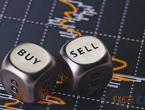Spot gold bottomed out and rebounded, the FED must clarify the impact of this change in response to inflation
On Wednesday (October 6), spot gold continued to be under pressure as the US dollar index soared, investors worried that soaring energy prices might stimulate inflation and raise interest rates. However, before the release of the September non-agricultural employment data in the United States, gold bears were cautious. The price of gold rebounded from a four-day low of $1,745.99 per ounce, regaining most of the decline. Investors waited for the data to give the Fed tighten monetary policy. Clues to timing.
At GMT+8 20:08, spot gold fell 0.15% to US$1757.47 per ounce; the main COMEX gold contract fell 0.18% to US$1758.0 per ounce; the US dollar index rose 0.36% to 94.316.
The U.S. dollar bullish situation is gratifying
The market predicts that the US September employment data to be released on Friday (October 8) is expected to add 470,000 jobs. The data is considered essential to inform the Fed's future policy tone and pace of policy adjustments, especially when these data are impressive or disappointing.
U.S. Treasury Secretary Yellen on Tuesday: "I believe the Fed will make the right decision. We have received an incredibly unusual shock: On the one hand, we still have nearly 6 million fewer jobs than before the outbreak of the new crown, which means Many people still need jobs; on the other hand, many companies find it difficult to recruit."
The federal funds rate futures market predicts that the Fed will start raising interest rates around November 2022, but interest rates will only reach a level of just over 1% before the end of 2025, although Fed members expect interest rates to reach 1.75% in 2024.
Francesco Pesole, G10 foreign exchange strategist at ING, said that the U.S. dollar has a bullish outlook and the U.S. Treasury yield curve has become steeper again. The dot plot announced after the Fed’s September meeting tends to be hawkish. The Fed will enter a three-year tightening cycle starting next year."
Inflation expected to last longer
US Treasury Secretary Yellen warned on Tuesday that the inflationary pressures hitting the US economy may continue for some time. She said in a live interview on the SquawkBox program: "Supply bottlenecks have formed, leading to inflation. I believe they are temporary, but this does not mean that they will disappear in the next few months."
The Federal Reserve has set an inflation target of 2%, but the recent consensus reached by the Federal Open Market Committee estimates that the inflation level in 2021 may be around 3.7%, and then decline in the next few years.
And Yellen remains optimistic about the economic situation in general: "Our demand pattern has undergone an extraordinary shift, from services to goods. I know the Fed is trying to sort out its impact."
Chicago Fed President Evans said on Tuesday that he still believes that the supply bottleneck is the main reason for the recent increase in inflation. Although the inflation rate is higher than initially expected and may last longer, it will subside.
In an interview with CNBC, Evans said that he expects the inflation rate to reach 3.5% or 4% this year. “This will cut incomes, wages, etc. This is a problem. We will definitely monitor this, but it’s not true. The issue of monetary policy is an issue of infrastructure and supply."
Like most other Fed policymakers, he also reiterated his view that the Fed will begin to reduce the scale of monthly asset purchases during the year. If the reduction in debt purchases is completed in the middle or autumn of 2022, he will not be surprised.
The US dollar has won the favor of investors because the market expects that the Fed will start the process of reducing the scale of asset purchases during the year and lay the foundation for the withdrawal of the ultra-low interest rate policy implemented by the European Central Bank and the Bank of Japan in response to the new crown pandemic.
Moreover, inflation is not just a problem for the United States. Tight supply chains around the world will aggravate upward pressure on prices and make the market nervous. This will increase the pressure on the Fed to accelerate monetary policy tightening and put pressure on gold.
Investors are upset about the U.S. debt ceiling
There are still two weeks before the October 18 deadline. As the U.S. Congress raises the debt ceiling to avoid the historic debt default deadline approaching, concerns about the debt ceiling begin to disturb investors.
Arthur Hogan, chief market strategist at National Securities Corp, said: "Washington's debt ceiling and infrastructure negotiations continue to be the focus this week, and there are more signs that if the situation continues to deteriorate, the rating agencies may lower the US credit rating by one notch."
US President Biden said on Monday that unless Republicans and Democrats work together to vote to raise the debt ceiling in the next two weeks, the federal government may exceed the $28.4 trillion debt ceiling and default on an unprecedented level.
U.S. Treasury Secretary Yellen said on Tuesday that it is “completely necessary” for Congress to raise the federal debt ceiling before the October 18 deadline to avoid US defaults. But Yellen added that she opposes the use of loopholes in the U.S. currency law to resolve the crisis, and opposes the forging of a trillion dollars in platinum coins.
The idea of minting platinum coins came from a legal loophole that allowed the Ministry of Finance to mint platinum coins of any denomination. Some progressive commentators and Democratic lawmakers have suggested minting one or more $1 trillion coins to break the deadlock of the Republican Party’s refusal to support raising the $28.4 trillion debt ceiling.
Dan Belton, a fixed-income strategist at BMO Capital in Chicago, said: "Except for the possibility of a slight increase in volatility, the current volatility is not large enough to make me feel that the debt ceiling has led to increased market panic."
October 18 is the deadline for raising the debt ceiling. Otherwise, the Ministry of Finance will exhaust its extraordinary borrowing capacity and its limited cash reserves will soon be exhausted. A default will be catastrophic, will lead to a recession in the U.S. economy, and threaten the reserve status of the U.S. dollar.
Look at $1727 under spot gold
On the daily chart, the price of gold has started a three-wave downward trend from US$1770. The support below looks to the 23.6% target of US$1744 and the 38.2% target of US$1727. Wave 3 is a sub-wave of the downward (3) wave that started at $1834. (3) Wave is a sub-wave of the downward ((Y)) wave that started from 1917 USD. The ((Y)) wave belongs to the adjusted IV wave that started at $2,075.












